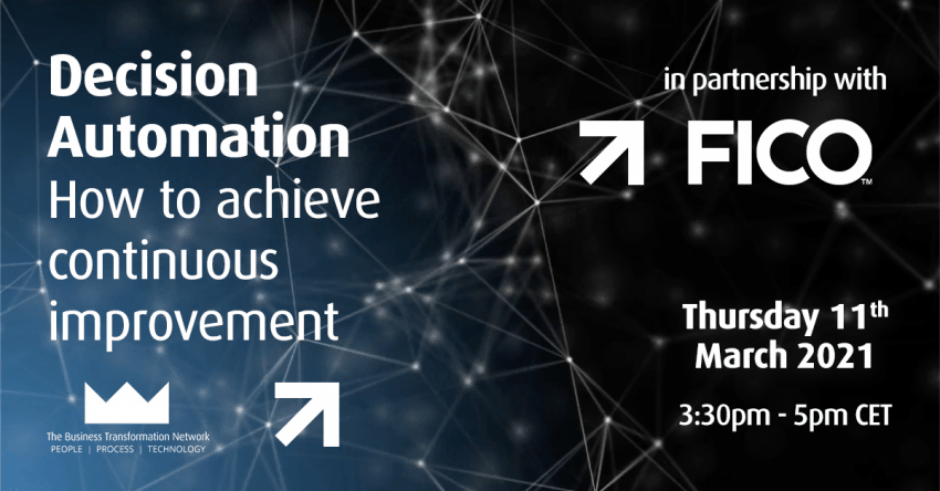We recently hosted a virtual roundtable in partnership with FICO on ‘Decision Automation – How to achieve continuous improvement?’. The conversation considered a variety of aspects around the how are you using decision management technology and decision automation today, how to innovate with market uncertainties and much more.
In an ever-evolving digital landscape, the need to create efficiencies and sustain consistency is paramount. Organisations are facing increased scrutiny to get the best out of their people and to optimise the time they spend working and making better decisions. How can you achieve continuous improvement in this space?
The key takeaways from the conversation appear below.
There is a constant battle between regulation and innovation
Regulations go hand in hand with innovation and the more agile you are the easier it will be for you to adapt to regulatory changes. The more innovative an organisation is, the more agile they are and the easier it is for them to adapt to the constantly changing regulations, but getting to this level of agility can be difficult. Attendees found that if decision automation was conducted by the same people that conduct the analysis, then there was more opportunity for quick reactions and agility to the changing regulations that the financial services industry can face almost everyday.
Alternative data will provide a way forward in forms of innovation, especially when the data shared is incredibly varied, there will be a way in which each area can be used for innovation, but most organisations aren’t there yet. Everyone seems to be exploring alternative data to see how they could change or innovate their offerings, but it all seems to be in very early forms of this exploration.
Help regulators understand your processes
Attendees discussed the potential of educating regulators and regulatory bodies on the details of what should be happening and the rudimentary processes behind it could help them understand and be more comfortable with innovative ways of working. Helping each other will mean that in the future regulators and financial services can work together on the basis of shared knowledge to drive the industry forward with the approval of new models and market innovations.
There are some markets where collaborative innovation works best
It can seem that often within financial services, there are internal pressures that contradict the need for innovation, with the risk-averse nature of many areas of financial services (like compliance). In addition to this, the larger, more established organisations have to be incredibly careful when it comes to innovation, as they are in the public eye and can easily progress from mistake to scandal.
In some instances, collaborating with competitors for innovation could provide the needed breakthrough, as you have more resources working to tackle the problem together. Tackling external threats and threat-related regulations (like fraud regulations) as a collective with your competitors, can make innovation much easier.
Creating an environment of continuous improvement
Optimisation seems to be a missed opportunity especially in financial services, and you need a framework, backbone and a lot of cross-testing to even begin to optimise processes. It could be revolutionary for organisations if they test to learn more about the customer experience and the optimise processes from here. This would allow the financial services to make well-informed decisions quickly, allowing them to take earlier action, which can then be transferred back into the customer experience.
Taking the above into account, it was obvious that although sometimes the Financial Services industry is innovative, it is not necessarily an area of comfort yet. In addition to this, working with regulators to educate and share knowledge, can allow you to understand the problem areas and innovate around them, allowing innovation and regulation to work together for the future of financial services. From this it was concluded that one of the best ways for organisations to innovate to meet regulatory needs would be through competitive collaboration.
FICO (NYSE: FICO) powers decisions that help people and businesses around the world prosper. The company is a pioneer in the use of predictive analytics and data science to improve operational decisions. Using FICO solutions, businesses in more than 100 countries do everything from protecting 2.6 billion payment cards from fraud, to helping people get credit, to ensuring that millions of airplanes and rental cars are in the right place at the right time.




